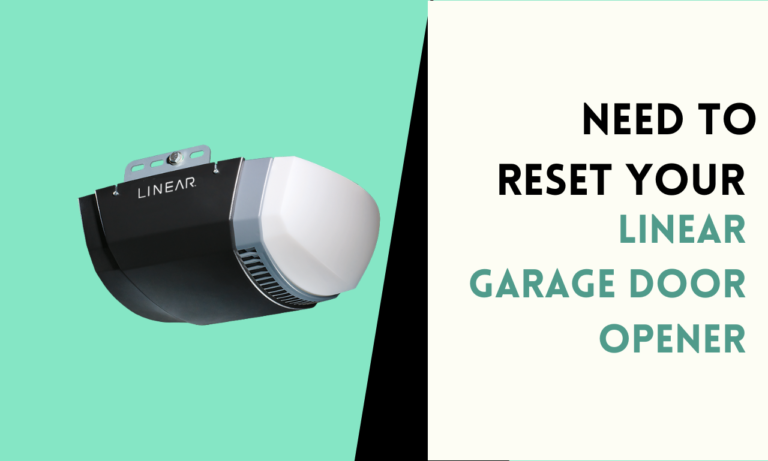5 Best Presence Sensors for Accurate Motion Detection
How can you ensure your smart home responds instantly to your presence, no matter how subtle your movements are? The automation of lighting, security, and other devices may be greatly improved by selecting the optimal presence sensor.
How to choose the Best Presence Sensor for Your Needs?
1. Room Size
Consider the size of the room where the sensor will be placed. Larger rooms may require sensors with a wide range, while smaller spaces may only need basic detection capabilities.
2. Smart Home Integration
Make sure the sensor is compatible with your existing smart home setup. This ensures smooth automation without compatibility issues.
3. Type of Automation Needed
Determine the type of automation you plan to set up. If it’s controlling lights, security systems, or HVAC systems, choose a sensor that offers features tailored to your specific use case.
4. Budget
Presence sensors come in a range of prices, so it’s important to choose one that fits within your budget while still offering the features you need.
Best Presence Sensors Available
1. Philips Hue Motion Sensor
Overview: A wireless sensor meant to automate your home lighting system is the Philips Hue Motion Sensor. It easily integrates with the Philips Hue environment and provides fast movement reactions for automation, including lighting control.

Technology: PIR Sensor
Compatibility: Compatible with Amazon Alexa, Google Home voice control and automation. Works directly with Wi-Fi and integrates with the Kasa Smart app.
Features:
- No Hub Required
- Customizable Timer
- Energy Monitoring
- Fast motion detection
- Easy Installation
Pros:
- Easy to install
- Reliable performance
- Integration with multiple smart home systems
- Additional sensors for temperature and lighting control
Cons:
- Requires a Philips Hue Bridge for full functionality
- Slightly more expensive than other options
2. Kasa Smart Motion Sensor Switch (HS200M)
Overview: From the trusted brand TP-Link, the Kasa Smart Motion Sensor Switch offers an excellent solution for automating lights based on both motion and presence. The switch can be connected directly to Wi-Fi, making it convenient for smart home automation without needing a hub.

Technology: PIR Sensor with extended presence detection.
Compatibility: Works with Apple HomeKit, Amazon Alexa, and Google Home.
Features:
- Long battery life (up to two years)
- Compact and lightweight design
- 170-degree field of view
- Wireless and easy to install
- Zigbee connectivity
Pros:
- Affordable and easy to install.
- Combines both motion detection and manual control.
- Works directly with Wi-Fi, no hub required.
- Scheduling and timer features improve energy efficiency.
Cons:
- Limited to lighting automation.
- PIR technology may not detect stationary individuals effectively.
- No dimming capabilities.
3. Aqara Motion Sensor FP2
Overview: A small, effective gadget that can detect motion and initiate smart home automation is the Aqara Motion Sensor. It is well-known for its long battery life and fast reaction time, and it integrates easily into many smart home settings.

Technology: mmWave (Millimeter Wave) technology
Compatibility: Works with Apple HomeKit, Amazon Alexa, and Google Home.
Features:
- Long battery life (up to two years)
- Compact and lightweight design
- 120-degree field of view
- Wireless and easy to install
- Zigbee connectivity
Pros:
- Affordable and reliable.
- Wide detection range.
- Long battery life.
- Integration with several smart home platforms.
Cons:
- Requires an Aqara Hub or compatible Zigbee hub for operation.
- Limited functionality without a hub.
4. Fibaro Z-Wave Motion Sensor
Overview: The Fibaro Z-Wave Motion Sensor is a multipurpose gadget that monitors vibrations, temperature, and light levels in addition to motion. With so many features, this sensor is ideal for sophisticated smart home installations.

Technology: Z-Wave technology
Compatibility: Works with Z-Wave hubs, including SmartThings, Home Assistant, and Fibaro Home Center.
Features:
- Multi-sensor capabilities (motion, light, temperature, vibration)
- Z-Wave communication
- Compact and stylish design
- Energy-efficient
- Adjustable sensitivity
Pros:
- Multiple sensors in one device
- Wide compatibility with Z-Wave systems
- Compact and attractive design
- Reliable performance
Cons:
- More expensive than other motion sensors
- Requires a Z-Wave hub for full functionality
5. Lutron Caseta Motion Sensor
Overview: An excellent gadget made to function with the Lutron Caseta lighting system is the Lutron Caseta Motion Sensor. It is perfect for automating lighting and other smart devices and provides quick and precise motion detection.

Technology: PIR technology
Compatibility: Integrates with the Lutron Caseta ecosystem and is compatible with Google Home, Amazon Alexa, and Apple HomeKit via the Lutron Smart Bridge.
Features:
- 10-year battery life
- Wide coverage (up to 600 square feet)
- Wireless and battery-operated
- Quick and responsive motion detection
- Adjustable timeout settings
Pros:
- Long battery life
- Wide coverage area
- Works well with Lutron Caseta lighting systems
- Easy setup and reliable performance
Cons:
- Limited to the Lutron Caseta system for full functionality
- Higher price point
Benefits of Using a Presence Sensor
- Energy Savings– Presence sensors assist reduce wasteful energy use, which lowers your utility costs by managing HVAC and lighting systems depending on occupancy.
- Accurate Detection– Detects even subtle movements, ensuring devices stay active as long as someone is in the room.
- Improved Security– Can trigger alarms or notifications based on movement, improving home security by detecting activity.
- Convenient Automation– Automates daily tasks such as lighting, heating, or cooling, making your home more convenient.
- Customizable Settings– Allows for tailored automation based on occupancy, providing a more personalized smart home experience.
FAQ
1. How is a presence sensor different from a motion sensor?
Presence sensors are more accurate in detecting if a person is still in a room than motion sensors, which only pick up major movements.
2. Which smart home systems can presence sensors work with?
The majority of presence sensors are easily integrated with your smart home setup thanks to their compatibility with well-known platforms like Google Home, Amazon Alexa, Apple HomeKit, and Home Assistant.
3. Can presence sensors save energy?
Yes, by automatically shutting off lighting or heating systems in a room while no one is there, presence sensors can help save electricity.
4. What should I consider while choosing a presence sensor?
Consider factors like sensitivity to small movements, detection range, smart home compatibility, and installation options to ensure the sensor meets your specific needs.

Scott is a husband, father, passionate writer and owner of homeautomationtalks.com and seniorgadgetguide.com. He loves to spend time in the garden, walking in the woods, cooking, is an avid gamer and most of all a tech enthusiast, which makes him the default tech support for his parents. 🙂






